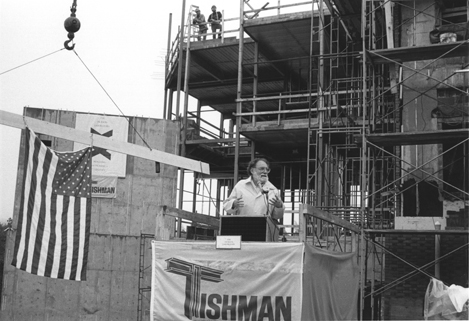
Faculty Research 1990 - 1999
Combination chemotherapy and IL-15 administration induce permanent tumor regression in a mouse lung tumor model: NK and T cell-mediated effects antagonized by B cells.
Document Type
Article
Publication Date
1998
Keywords
Antigens-CD44: an, Antineoplastic-Agents-Alkylating: tu, B-Lymphocytes: im, Biological-Response-Modifiers: tu, Combined-Modality-Therapy, Cyclophosphamide: tu, Cytotoxicity-Immunologic, Drug-Screening-Assays-Antitumor, H-2-Antigens: im, Immunologic-Deficiency-Syndromes: ge, co, Immunologic-Memory, Interleukin-15: tu, Killer-Cells-Lymphokine-Activated: im, Killer-Cells-Natural: im, Lung-Neoplasms: dt, im, sc, th, Lymphocyte-Transformation, Male, Mice, Mice-Inbred-C57BL, Mice-Knockout, Mice-Mutant-Strains, Mice-Nude, Mice-SCID, Neoplasm-Transplantation, Receptors-Antigen-T-Cell-alpha-beta: ge, df, Receptors-Antigen-T-Cell-gamma-delta: ge, df, Rhabdomyosarcoma: dt, im, sc, th, SUPPORT-NON-U-S-GOVT, SUPPORT-U-S-GOVT-P-H-S, T-Lymphocyte-Subsets: im
First Page
6977
Last Page
6984
JAX Source
J Immunol 1998 Dec 15;161(12):6977-84
Grant
CA34196/CA/NCI
Abstract
Previous studies have demonstrated that IL-15 administration after cyclophosphamide (CY) injection of C57BL/6J mice bearing the i.m. 76-9 rhabdomyosarcoma resulted in a significant prolongation of life. In the present study, we investigated the immune response against the 76-9 experimental lung metastases after CY + IL-15 therapy. Administration of CY + IL-15, but not IL-15 alone, induced prolongation of life and cures in 32% of mice bearing established experimental pulmonary metastases of 76-9 tumor. The CY + IL-15 therapy resulted in increased levels of NK1.1+/LGL-1+ cells, and CD8+/CD44+ T cells in PBL. In vitro cytotoxic assay of PBL indicated the induction of lymphokine-activated killer cell activity, but no evident tumor-specific class I-restricted lytic activity. Survival studies showed that the presence of NK and T lymphocytes is necessary for successful CY + IL-15 therapy. Experiments using knockout mice implied that either alphabeta or gammadelta T cells were required for an antitumor effect induced by CY + IL-15 therapy. However, mice lacking in both alphabeta and gammadelta T cells failed to respond to combination therapy. Cured B6 and alphabeta or gammadelta T cell-deficient mice were immune to rechallenge with 76-9, but not B16LM tumor. B cell-deficient mice showed a significant improvement in the survival rate both after CY and combination CY + IL-15 therapy compared with normal B6 mice. Overall, the data suggest that the interaction of NK cells with tumor-specific alphabeta or gammadelta T lymphocytes is necessary for successful therapy, while B cells appear to suppress the antitumor effects of CY + IL-15 therapy.
Recommended Citation
Chapoval AI,
Fuller JA,
Kremlev SG,
Kamdar SJ,
Evans R.
Combination chemotherapy and IL-15 administration induce permanent tumor regression in a mouse lung tumor model: NK and T cell-mediated effects antagonized by B cells. J Immunol 1998 Dec 15;161(12):6977-84

